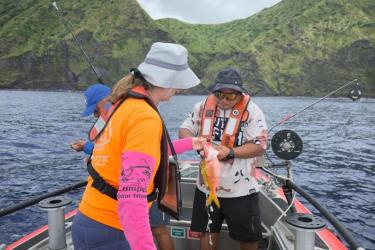“There’s a seal on the beach! Let’s go get a 'sealfie'!” That must have been what nearly 18 percent of people on Instagram thought before approaching an endangered species. In a recent study, NOAA scientists used social media to monitor human activities around endangered Hawaiian monk seals. They discovered that human disturbance is more common than they thought.
Scientists Mark Sullivan, Dr. Stacie Robinson, and Dr. Charles Littnan tracked the hashtag #monkseal on Instagram. They were evaluating biological and geographical information, behavioral concerns, human disturbance, and public perceptions. Traditionally, people report non-emergency monk seal sightings to pifsc.monksealsighting@noaa.gov. The team compared their findings on social media with the traditional reports—and exposed an ugly truth. Nearly 18 percent of all #monkseal posts suggested a human disturbed the seal. Less than one percent of traditional seal sighting reports suggested the same.
When Sullivan created his personal Instagram account in 2012, the first hashtag he searched for was #monkseal. “I could not believe how many people were posting pictures of themselves so close to monk seals.” The state of Hawaiʻi and the federal government have regulations that protect Hawaiian monk seals. NOAA recommends that people remain at least 50 feet from endangered Hawaiian monk seals, but people often ignore these guidelines.
“For seal research and conservation activities, NOAA scientists obtain permits that allow them to disturb animals by accident, but I always duck and tip-toe around them. I wouldn’t be doing my job right if I didn’t work hard to avoid scaring them into the water,” says Sullivan.

Seals reacted to human disturbance in nearly 18 percent of social media posts in this study. These reactions were divided into three categories—moving away from the photographer/ person in frame, making a defensive gesture like mouthing or barking, and looking at the person or camera. The remaining 82 percent of posts showed no disturbance to the seal.
Many monk seals in Hawaiʻi are used to crowded beaches and hordes of fans surrounding them, but habituation to human presence can harm seals. This study helps us understand what really happens on the beaches. It also shows that we may need to use social media more often to promote our guidelines and outreach.
Social media platforms can be an effective tool for wildlife research and conservation programs. When users post pictures and videos of animals, scientists can access these real-time data. They can monitor them for information about animal presence, behavior, and threats to survival. Many conservation programs may benefit from similar work using social media to supplement their research and conservation activities.


